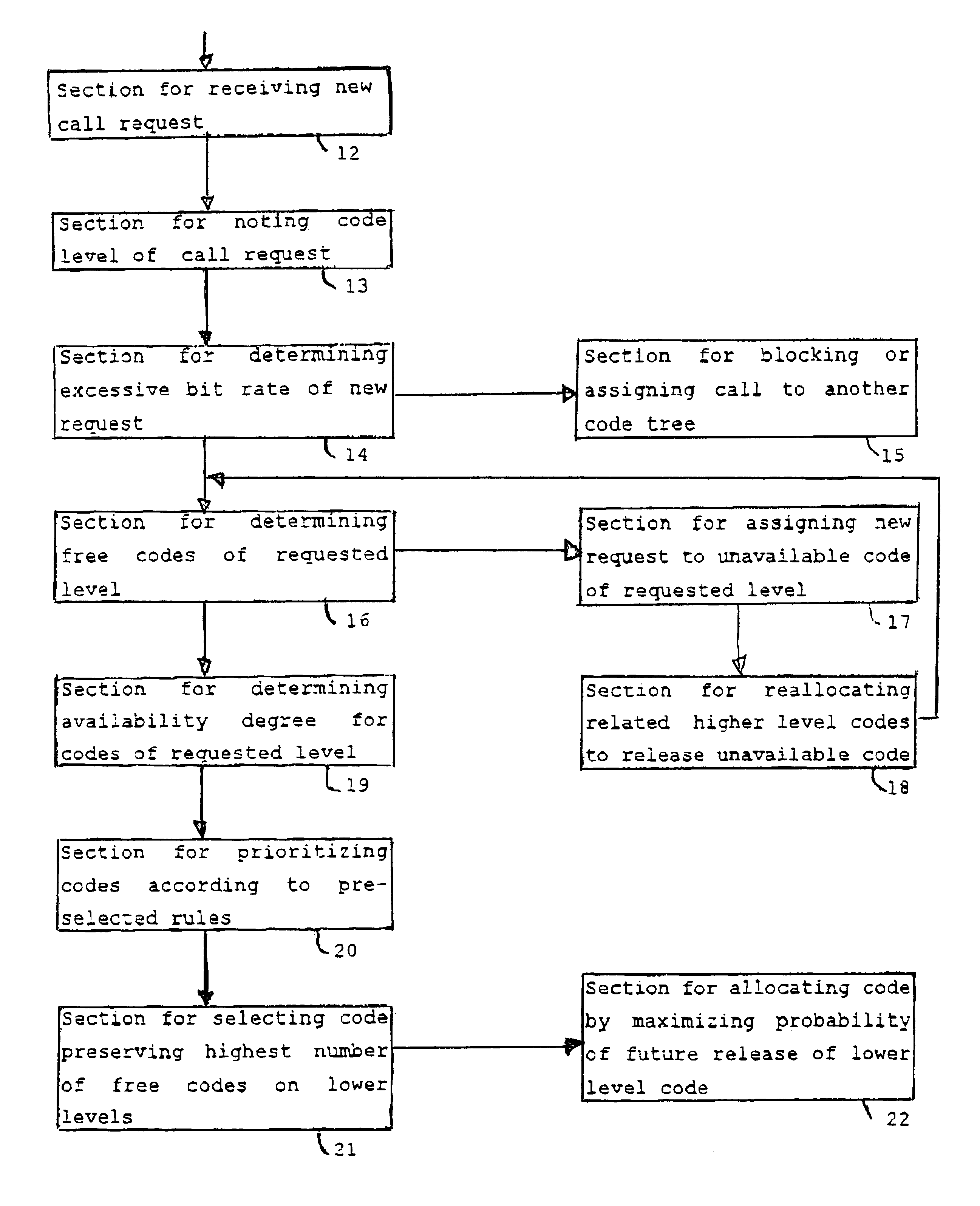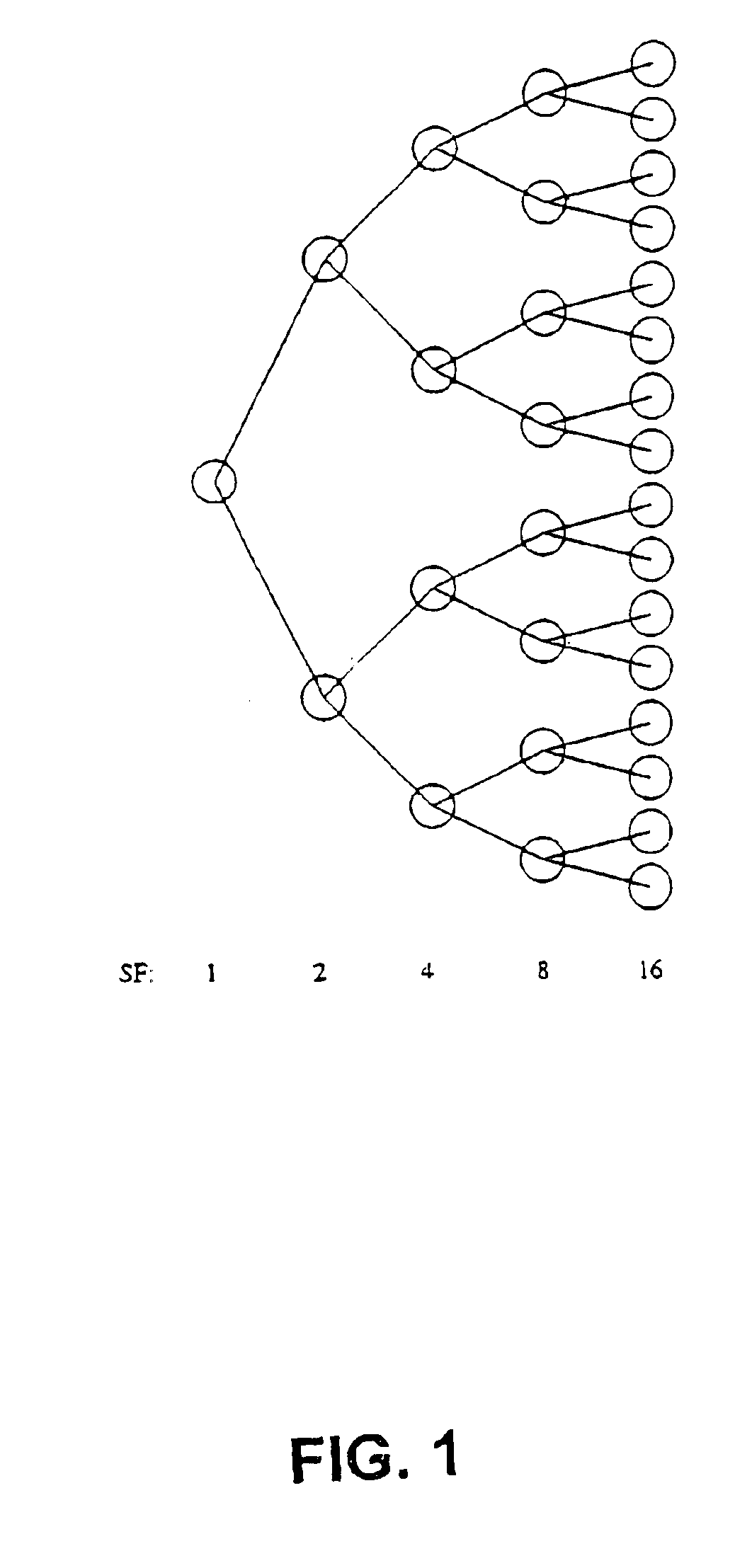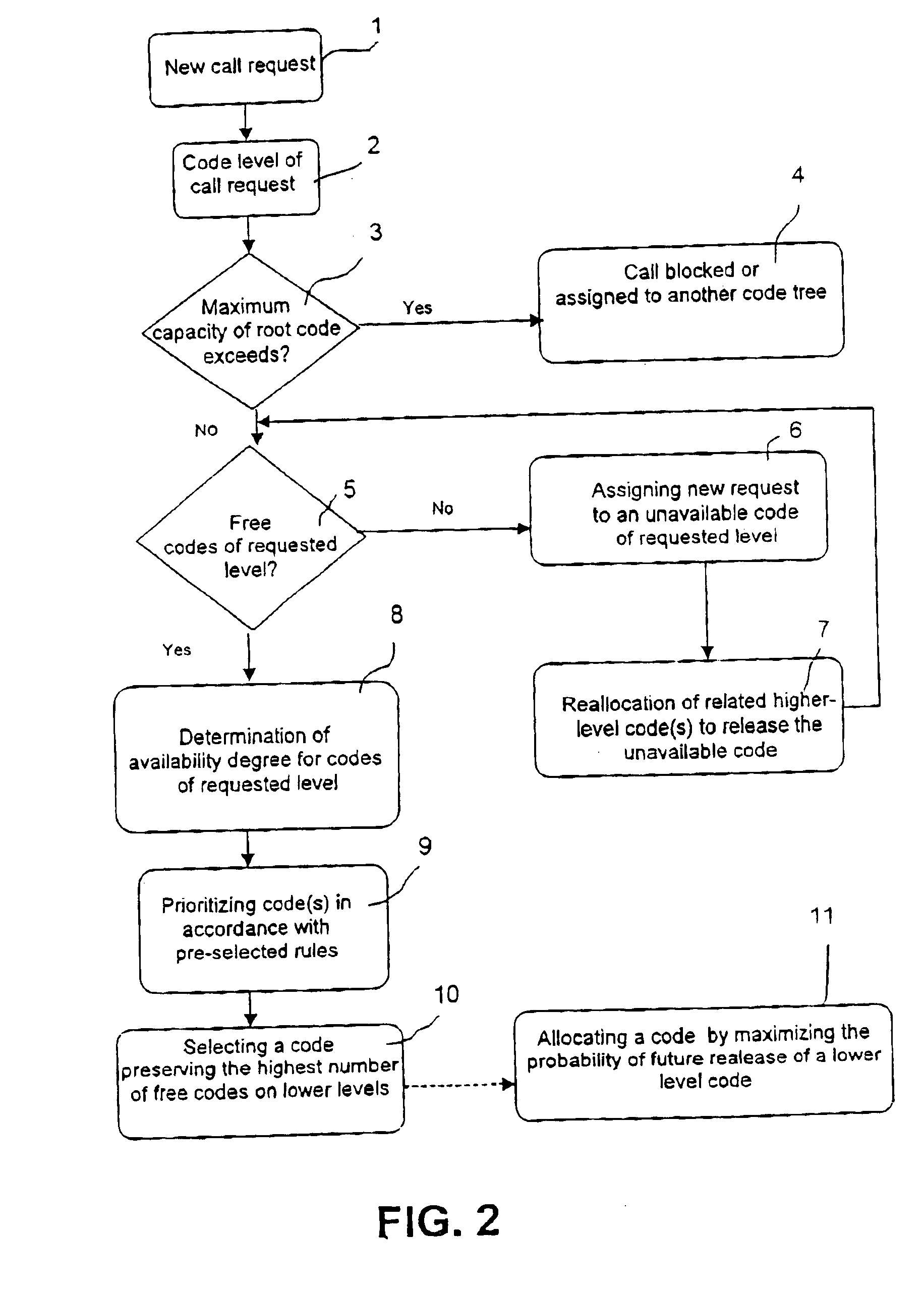Method, system, apparatus and computer program in a telecommunication system
a telecommunication system and computer program technology, applied in the direction of orthogonal multiplex, multiplex communication, wireless communication, etc., can solve the problems of limited number of codes to be allocated, holes in the code structure of busy codes, and interference with adjacent channels, so as to achieve the effect of reducing the signalling in the system
- Summary
- Abstract
- Description
- Claims
- Application Information
AI Technical Summary
Benefits of technology
Problems solved by technology
Method used
Image
Examples
example 1
(Present Availability, Case 1)
FIG. 3 presents a hypothetical situation, wherein OVSF codes are allocated for incoming requests. Five levels k of codes, said levels being numbered as 0, 1, 2, 3 and 4, are indicated in FIG. 3. Free codes in the highest level are identified by capital letters A-M.
An incoming request of level k=4 of the code tree of FIG. 3, according to steps 1 and 2 of FIG. 2 is now assumed. If the maximum total bit rate or the transfer capacity or the code tree is not exceeded, as determined in step 3, and there are free codes of the requested level as determined by step 5, the algorithm of the invention considers, in step 8, the unavailability level of each free code's father. The result thereof is that the unavailability level is ½ for C and zero for all the remaining free codes. This means that C will be chosen for assignment to achieve the aim in accordance with which the highest possible number or lower level available codes should be preserved as selected by ste...
example 2
(Future Availability, Case 2)
FIG. 4 presents another hypothetical situation, wherein OVSF codes are allocated for incoming requests. Five levels k of codes numbered as 0, 1, 2, 3 and 4 are indicated. Free codes in the highest level k are identified by capital letters A-E.
An incoming request of level k=4 is assumed according to steps 1 and 2 of FIG. 2. If the maximum bit rate or the transfer capacity of the code tree is not exceeded as determined by step 3 and there are free codes of the requested level as determined by step 5, the availability degree for the free codes are determined by step e. The OVSF tree of FIG. 4 presents 5 free codes on level k=4, which are A, B, C, D and E. Codes C and D have a free father (zero unavailability), so they should be discarded to leave as much higher bit rate codes free as possible as selected by step 10.
Codes A, B and E have “half” unavailable fathers, and therefore the algorithm considers their grand-father's unavailability, which is for codes ...
example 3
(Reallocation, First Embodiment, Case 3)
FIG. 5 presents still another hypothetical situation, wherein OVSF codes are allocated for incoming calls. An incoming request of level k=1 is row assumed to be allocated in steps 1 and 2 of FIG. 2. If the maximum total bit rate or the transfer capacity of the code tree is not exceeded, as determined by step 3, the availability degree of the codes of requested level is determined in step 5. Since according to this analysis no free codes are available, a reallocation algorithm is performed according to which one of the two unavailable codes, viz. A or B, has to be chosen by step 6 to be assigned for the incoming request. Code A has two used descendants, D and E of level k=4, while code B has only one used son, C of level k=2, so code B is preferred according to the rule of the present invention saying that reallocation should be performed by minimizing the number of changes of already allocated codes and that the preferred unavailable code is t...
PUM
 Login to View More
Login to View More Abstract
Description
Claims
Application Information
 Login to View More
Login to View More - R&D
- Intellectual Property
- Life Sciences
- Materials
- Tech Scout
- Unparalleled Data Quality
- Higher Quality Content
- 60% Fewer Hallucinations
Browse by: Latest US Patents, China's latest patents, Technical Efficacy Thesaurus, Application Domain, Technology Topic, Popular Technical Reports.
© 2025 PatSnap. All rights reserved.Legal|Privacy policy|Modern Slavery Act Transparency Statement|Sitemap|About US| Contact US: help@patsnap.com



